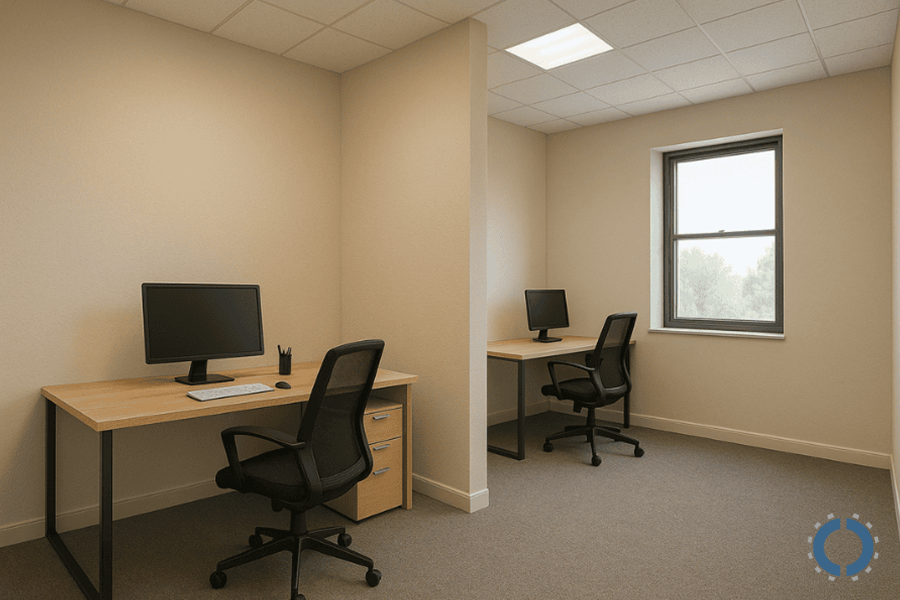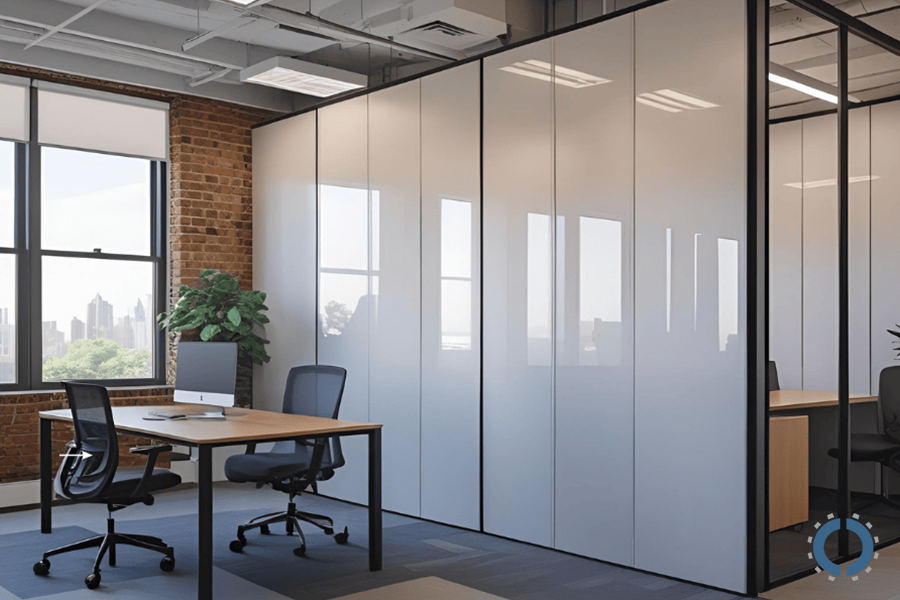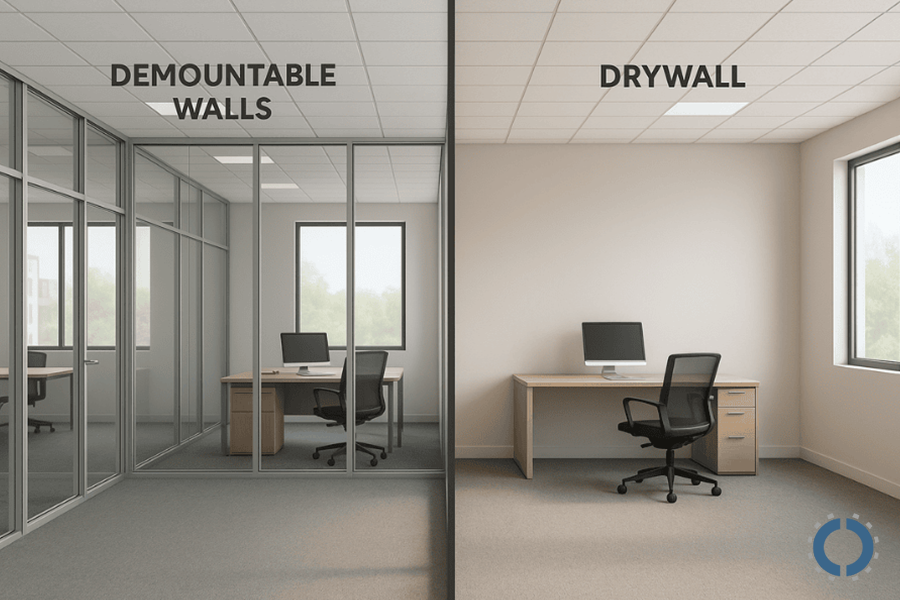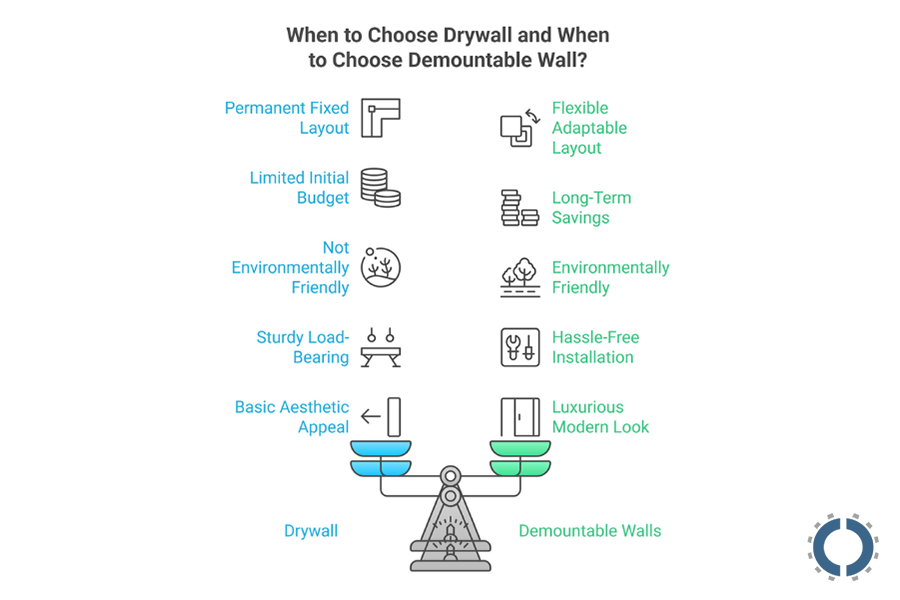Demountable Walls Vs Drywall: Ultimate Guide [2025]
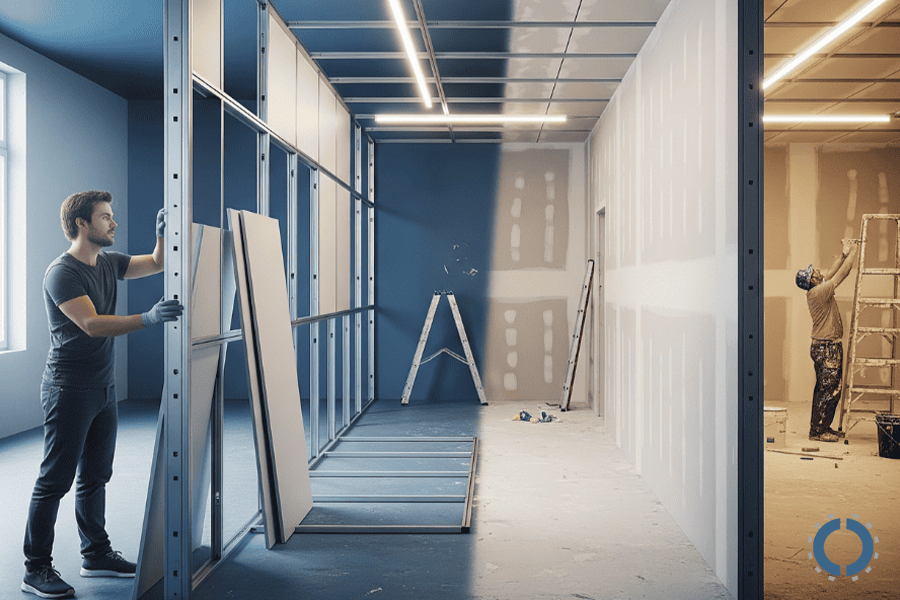
When designing modern workspaces in 2025, choosing between different partitioning options can have a direct impact on productivity, flexibility, and even long-term costs.
With the increasing need for flexible, modular, and adaptable offices, two main solutions for separating space have gained more attention: demountable walls and drywall.
But which one is the better choice for the future?
In this ultimate guide for 2025, we will help you make the best choice for your workspace by carefully examining the pros and cons of Demountable Walls Vs Drywall.
If you are redesigning your office or looking for cost-effective and forward-thinking office furniture Houston, this article is for you.
What Are Drywalls?
Drywall is one of the most common methods of constructing interior walls in traditional construction.
This type of wall is usually made of paper-coated plasterboards that are mounted on metal or wooden frames.
Drywall has been used for decades as a quick and relatively inexpensive solution for dividing space in buildings and is still very common in residential, office, and commercial projects.
Advantages of Drywall
- Lower Initial Cost: Compared to some modern systems, such as demountable walls, basic drywall materials are usually less expensive, especially in projects that do not require frequent space changes.
- Familiar and Widely Used Construction Method: Drywall is a method that almost all contractors and craftsmen are familiar with.
Expert labor is readily available and does not require special training.
- Traditional and Seamless Appearance: After plastering and painting, drywall creates a smooth, clean, and classic surface that is perfect for traditional offices or homes.
- Capable of Being Load-Bearing: Unlike many demountable walls, in some designs, drywall can be constructed to withstand light to moderate loads.
- Easy to Integrate Wiring and Plumbing: Running water pipes, electrical wiring, telephone, or network through drywall is easy because its interior space is flexible and accessible.
Disadvantages of Drywall
- Lengthy and Messy Installation Process: Installing drywall usually involves many laborious steps.
These steps involve dust, debris, and the need to coordinate several different specialties.
- Permanent Structure and Difficult to Reconfigure: Drywall vs demountable wall has a fixed structure after installation.
If you want to change the interior design later, it is very difficult and expensive to move it.
- High Costs for Future Layout Changes: Changing the layout of offices requires demolishing existing walls and rebuilding, which is both time-consuming and costly.
Additionally, enforcement activities cause significant disruption to staff or residents.
- Significant Construction Waste: Drywall demolition produces a significant amount of plaster waste and debris that is usually not recyclable.
- Vulnerable Over Time: Drywall has little resistance to impact, pressure, or moisture and may crack, scratch, or dent over time.
- No reusability: Unlike some modern demountable walls, drywall is disposable.
When redesigned or demolished, it cannot be reinstalled and will eventually end up in a landfill.
What Are Demountable walls?
Demountable walls, or modular walls, are a type of prefabricated, non-permanent partitioning used to divide interior spaces, especially in modern offices in 2025.
Unlike traditional walls that have a fixed and permanent structure, these walls can be installed, disassembled, moved, and reused, and do not require demolition or waste generation.
This feature makes them a great choice for dynamic and flexible spaces that require frequent changes in layout or design.
There are two types of demountable walls, which include modular and unitized systems.
Modular systems consist of independent panels that are connected with special connectors and can be easily moved or replaced.
Unitized systems come completely pre-assembled from the factory and are installed as large units, which are faster to implement and more integrated.
Advantages of Demountable Walls
- Flexibility and Adaptability: These walls can be installed or moved in a matter of hours or days, whereas changing drywall can take weeks.
- Long-Term Cost Savings: Although their initial cost of demountable walls vs drywall is higher, they are more cost-effective in the long run due to their reusability, reduced labor requirements for reconstruction, and potential tax benefits.
- Sustainability and Environmental Impact: Demountable walls are made from recycled or recyclable materials, significantly reducing construction waste and helping to earn points on environmental certifications.
- Clean and Efficient Installation: The parts are pre-assembled, so there is no dust, noise, or much disturbance to the users of the space during installation.
- Durability and Low Maintenance: Demountable walls are usually made of sturdy metal frames, and each panel can be replaced individually without having to replace the entire structure.
- Aesthetic and Design Versatility: These walls are offered in various models such as glass, wood, fabric, and laminate.
There is also the ability to add features such as lighting, soundproofing, and even an internal monitor.
- Acoustic Performance: Many of these walls are designed to provide ambient sound control and increased acoustic privacy.
- Optimized Natural Light: Especially by using glass panels, they allow for maximum use of natural light and increase the sense of openness of the space.
- Reusability and Portability: If the office moves, the same demountable walls can be disassembled, packed, and reinstalled in the new space, without the need to purchase them again.
Disadvantages of Demountable Walls
- Higher Initial Cost: The initial investment for demountable walls vs drywall is higher, especially in advanced or customized systems.
- Intolerance of load: Most demountable walls are not load-bearing and cannot be used to support heavy structures or components.
Demountable Walls VS Drywalls
Now that you know the pros and cons of both demountable walls and drywalls, here’s a direct and detailed comparison of their key aspects to help you make informed decisions for your workspace design in 2025 and beyond.
1. Installation Time and Process
Installing drywalls vs demountable walls is time-consuming and involves multiple steps.
The process produces a lot of dust and requires the cooperation of multiple teams.
On the other hand, demountable walls are pre-fabricated in the factory and only require assembly on site.
Its installation is done by a specialist team in a few hours or days without any waste, noise, or disruption to employees.
2. Flexibility and Reconfiguration
Drywall has a fixed and unchangeable structure.
To move or remove it would require complete demolition and reconstruction, which is very costly and time-consuming.
But demountable walls can be easily moved, removed, or replaced.
3. Initial vs. Long-Term Cost
The initial cost of drywall is usually lower, but it incurs high costs for demolition, reconstruction, and labor if changes are needed.
The initial cost of implementing demountable walls is higher, but it can be more cost-effective in the long run due to reusability, reduced renovation costs, and even tax benefits.
4. Environmental Impact and Waste
Drywall produces a lot of waste during installation and demolition, which is often non-recyclable and sent to landfills.
Demountable walls vs drywalls are made from recyclable materials and produce minimal waste during the installation process and subsequent modifications.
5. Durability and Maintenance
Maintaining drywall requires costly and time-consuming repairs.
Demountable walls are more durable, and if a panel is damaged, only that section can be easily replaced.
6. Aesthetics and Customization
It is possible to apply paint, wallpaper, or tile to drywall, but the variety of materials and modern effects is limited.
In contrast, demountable walls cover a wide range of materials and styles.
7. Acoustics and Privacy
Drywall provides a level of soundproofing, but it is not customizable, and its functionality is limited.
Demountable walls can be designed with acoustic panels or double-glazed windows to effectively increase the level of sound privacy.
These walls are suitable for conference rooms, private, or management spaces.
8. Load-Bearing Capability
Depending on the design, drywall has some load-bearing capacity and can support shelving or light structures.
Demountable walls vs drywalls are usually non-load-bearing and are not suitable for installing heavy components or bearing structural weight.
When to Choose Drywall and When to Choose Demountable Wall?
The choice between drywall and demountable walls depends on a variety of factors, including design goals, budget, potential future changes, environmental sustainability, and aesthetic preferences.
The following is a final guide to 2025 that will provide you with the necessary tips for making a decision.
Opt for Drywall if:
- You need a permanent, fixed layout.
If your workspace is designed to remain unchanged for years, drywall is a good choice.
- You need a load-bearing wall or a sturdy structure.
In cases where the wall must support part of the structure or where heavy equipment can be installed on it, drywall is a better option.
- You have a limited initial budget, and foresight is not a priority.
If low initial cost is the most important factor for you and no changes are anticipated in the use or layout of your business space, drywall will be more cost-effective.
Opt for Demountable Walls if:
- Flexibility, adaptability, and foresight are important to you.
In dynamic work environments or collaborative spaces, which will continue to be a popular office design in 2025, where there is a need for frequent redesign and changes, a demountable wall is the right choice.
- Long-term savings and return on investment are important to you.
These walls have a higher economic return by reducing renovation costs, allowing for reuse, and reducing downtime.
- The future of the Earth is important to your business, and you are looking for a sustainable and environmentally friendly solution.
Because the demountable wall is in line with environmental standards.
- You need hassle-free installation and removal.
This system is an excellent option for spaces where there should be no disruption to work or silence in the environment.
- You want a luxurious, modern look and high customization capabilities.
If interior design is important to you and you are looking to combine various materials such as glass, wood, metal, or fabric, these walls offer great design possibilities.
Conclusion
In 2025, the workplaces of businesses in Houston are constantly evolving, so demountable walls vs drywall are a good choice to meet the changing needs of companies and organizations.
Unlike drywall, which is more suitable for fixed and traditional structures, demountable walls, with features such as portability, quick installation, waste reduction, versatile design, and long-term economic returns, are considered a modern, flexible, and sustainable solution for the future of the workspace.
For businesses that prioritize environmental sustainability and cost savings in redesign, a demountable wall is not only a practical choice but also a long-term investment.
Finally, considering the points we explained in the 2025 Ultimate Guide to Demountable Walls vs. Drywalls, the final decision should be made by considering the specific needs of the project, development outlook, budget, and long-term use of the space.
It is recommended that you carefully evaluate the current and future needs of your workspace before making a final choice.

John Ofield is the owner of Collaborative Office Interiors. Houston’s trusted source for premium office furniture, office cubicles, demountable walls, office desks and tables, and complete workspace solutions. With more than 40 years of experience, he combines deep product knowledge with hands-on space-planning expertise to create ergonomic, productivity-focused work environments for businesses across Southeast Texas.

